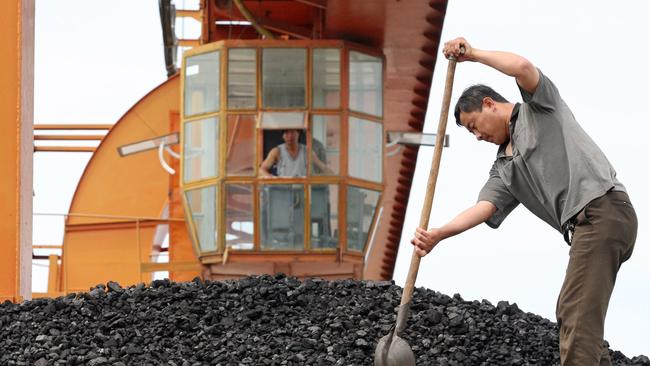Resources rally a game-changer: Goldman’s Tim Toohey
Goldman’s Tim Toohey is bullish on rate hikes and the Aussie, tipping commodities to outpace expectations.

Coking coal is up 300 per cent this year, thermal coal up 100 per cent and iron ore 80 per cent, with most of the gains in the past two months amid economic stimulus, regulatory change and speculation in China.
The surge in bulk commodity prices has been one of the biggest surprises of 2016 and the degree to which it is sustained will make a big difference for the Australian economy.
Based on Goldman Sachs’ upwardly revised commodity price forecasts, the increased value of coal and iron ore exports by the end of 2017 will be worth 1.4 per cent of GDP.
Whereas most economists expect the Reserve Bank to cut interest rates again in the second half of 2017, Toohey expects the RBA to hike in early 2018 and he warns that “the skew is towards an earlier kick off” in late 2017.
The Australian dollar is tipped to reach US78c in the next three months, and the surge in commodity prices means the chances of the currency moving into the US80c to US90c range are “relatively high.”
“It is hard to overstate the importance of this rapidly shifting dynamic,” Toohey says.
“We previously argued that the mere stability in the terms of trade would impart a significant shift in Australia’s national income, a theme that the RBA has subsequently noted.
“However, the sharp movement in commodity prices and the reassessment by our commodity team on the durability of the rally has transformed into a much stronger income boost that sharply reflates the nominal environment in Australia.”
Although his firm takes a cautious view on commodity prices, assuming relatively aggressively falls from current levels, that would still leave prices much higher that previously forecast.
Under this scenario, Australia’s terms of trade (export prices relative to import prices) will surge by around 8 per cent in 2017.
Toohey says this sets off a positive chain reaction throughout the economy. For one, the mining sector’s profit cycle will be much stronger, bolstering the case for resource equity investments.
But the potential effects of a stronger commodity price profile go well beyond the share market.
Goldman Sachs says the commodities windfall awaiting the government is large enough to distance the prospect of a sovereign ratings downgrade and provide scope for the government to think more seriously about its own infrastructure objectives.
Most economists persisting with a bearish view argue that any commodity price boost will just be a temporary boost to income that doesn’t flow through to capital expenditure and jobs.
But Toohey expects idled capacity in industries such as coal to be brought online and plans for investment will be reassessed. That should flow through to income and employment, helping to underpin consumption via lower household saving rates. In time, it could support a gradual improvement in wage growth. And higher input costs and stronger demand filters down to inflation expectations, solving the Reserve Bank’s low inflation dilemma.
“In many ways this is the reverse of the forces that have been in play since Australia’s terms of trade peaked in 2011,” Toohey says. “We continue to expect that this will prove to be a very sharp and relatively short acceleration in our preferred measures of national income.
“Nevertheless, we are mindful that this represents a fundamental shift in the risk profile of the Australian economy and as we look out to 2017 and beyond we have altered some of our key forecasts for Australia.”
He now expects GDP to accelerate from a 2.8 per cent average growth rate in 2017 to 3.3 per cent by 2020 with private-sector demand now much better placed to take more of a leading role in driving economic growth.
To be sure, Toohey does expect a sharp fall in housing investment to detract 0.8 per cent from GDP in 2017 and 2018, with most of the damage expected to come from a “relatively severe decline in high-rise construction”, but it’s important to keep this sector in perspective.
“Despite this sharp expected decline in new dwelling investment in 2017 and 2018 it is important to realise that subtractions from economic growth via sharp declines in business investment during the past three years have been far more acute.”








Goldman Sachs’ Australian chief economist Tim Toohey is predicting interest rate hikes and a stronger dollar as commodity prices continue to defy expectations.